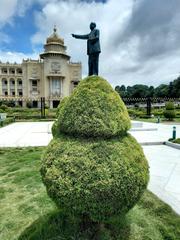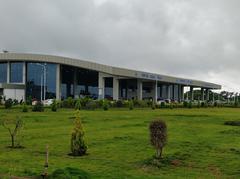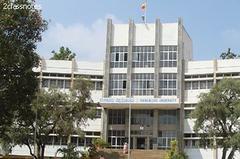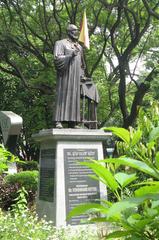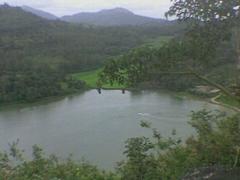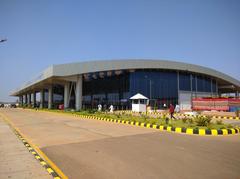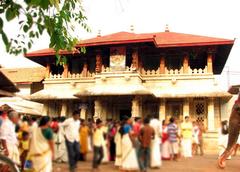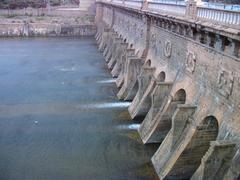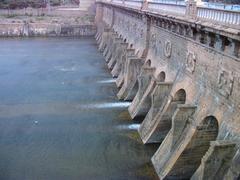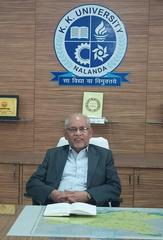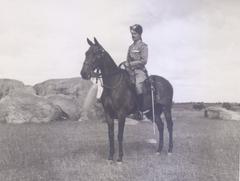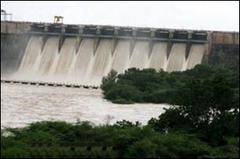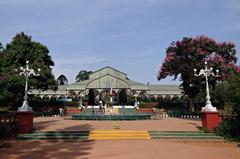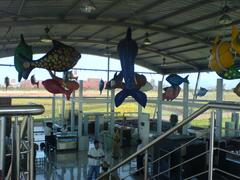Harangi Dam Visiting Guide: Karnataka, India — Tickets, Hours, Attractions, and Essential Tips
Date: 14/06/2025
Introduction
Harangi Dam, located near Kushalnagar in the verdant Kodagu (Coorg) district of Karnataka, is a remarkable destination that seamlessly combines engineering ingenuity, ecological richness, and tourist appeal. Built across the Harangi River—a major tributary of the Kaveri—this dam has been instrumental in transforming the region’s agricultural and socio-economic landscape since its completion in the late 1970s. Today, it stands not only as a vital resource for irrigation, hydroelectric power, and drinking water but also as a tranquil getaway for nature lovers, photographers, and families.
For those planning a trip, this guide provides comprehensive details on the dam’s history, engineering, environmental impact, practical visitor information, tickets, nearby attractions, and travel tips to ensure an enriching and hassle-free experience.
Contents
- Historical Background
- Engineering and Environmental Significance
- Visitor Information
- Nearby Attractions and Activities
- Frequently Asked Questions (FAQ)
- Conclusion
- Sources and Further Reading
Historical Background
Origins and Purpose
Harangi Dam was conceptualized and built to address the critical needs of water security, irrigation, and flood control in the Kodagu, Mysore, and Hassan districts. The project, initiated by the Karnataka State Government in 1971 and completed in 1979, was constructed on the Harangi River—a tributary emerging from the Pushpagiri Hills of the Western Ghats (Wikipedia; Sahyadri Stays). Its primary functions include:
- Irrigation: Supporting thousands of hectares of agricultural land, especially for crops like paddy, sugarcane, and coffee.
- Hydroelectric Power Generation: Housing a 9 MW hydropower plant.
- Flood Control: Managing monsoon runoff and mitigating flooding risks.
Construction Timeline and Socio-Economic Impact
- Construction Period: 1971–1979
- Executing Agencies: Karnataka State Government, KPCL, and Central Water Commission (Sahyadri Stays).
- Location: 9 km from Kushalnagar, 33–36 km from Madikeri (Kodagu District Official Website).
The dam’s consistent water supply has enabled multiple cropping seasons, improved rural livelihoods, and contributed to regional drinking water and tourism development (OneIndia).
Engineering and Environmental Significance
- Type: Masonry gravity dam built on granite bedrock (Sea Water Sports)
- Dimensions: Height ~47 meters; Length ~846 meters
- Storage Capacity: ~8.5 TMCft (840 million cubic meters) (Techraj6)
- Catchment Area: 419.58–717 km² (Wikipedia)
- Reservoir Surface: ~20 km²
Hydroelectric Power
The dam supports a 9 MW hydroelectric project, with two units of 4.5 MW each, operational since 1999 (Wikipedia).
Maintenance and Modern Challenges
Siltation has reduced the dam’s capacity, leading to ongoing desilting work to restore efficiency, scheduled for completion by December 2025 (Star of Mysore).
Environmental and Ecological Role
The reservoir and surrounding forests support a rich diversity of flora and fauna, making the area popular for birdwatching and nature walks (Explore Kodagu). Sustainable management efforts are in place to balance human use with ecological preservation.
Visitor Information
Visiting Hours and Tickets
- Hours: 8:00 AM to 6:00 PM daily (Trawell.in; Indian Panorama)
- Entry Fee: Typically INR 10–30 per person (may vary; carry cash)
- Parking: Nominal charges may apply
Best Time to Visit
- Monsoon & Post-Monsoon (August–October): Reservoir is full, dramatic water releases, lush green landscape (TravelTriangle)
- October–March: Pleasant weather, ideal for walks, picnics, and birdwatching
Accessibility and Facilities
- Travel: Best reached by private vehicle or taxi from Kushalnagar or Madikeri (ExploreBees)
- Facilities: Basic restrooms, garden area, limited food stalls; more amenities in Kushalnagar
- Accessibility: Main viewing areas are accessible; however, terrain may be uneven—plan ahead for differently-abled visitors
Travel Tips
- Wear sturdy, non-slip footwear, especially during the monsoon
- Bring water, snacks, sunscreen, and rain gear
- Arrive early on weekends or holidays for a quieter experience
- Respect safety barriers and signage, especially during water releases
- Carry all waste back to preserve the environment
Nearby Attractions and Activities
- Cauvery Nisargadhama: Bamboo groves, deer park, boating (8.5 km away)
- Dubare Elephant Camp: Elephant interactions and river rafting (~20–30 km)
- Namdroling Monastery (Golden Temple): Major Tibetan Buddhist center in Bylakuppe
- Pushpagiri Wildlife Sanctuary: Trekking and wildlife spotting
- Local Coffee Plantations: Guided tours showcasing Coorg’s coffee heritage
Consider combining your visit to Harangi Dam with these attractions for a full-day itinerary (PlanTrip.io).
Frequently Asked Questions (FAQ)
Q: What are Harangi Dam visiting hours?
A: 8:00 AM to 6:00 PM daily.
Q: What is the entry fee?
A: Typically INR 10–30 per person; subject to change.
Q: Is Harangi Dam accessible for differently-abled visitors?
A: Main areas are relatively accessible, but terrain can be uneven—plan accordingly.
Q: When is the best time to visit?
A: August–October for full reservoir and water release, or October–March for pleasant weather.
Q: Are guided tours available?
A: Occasionally, local guides may be available in Kushalnagar; check with tourism offices.
Q: Can I swim or boat at the dam?
A: Swimming and unauthorized boating are strictly prohibited for safety.
Conclusion
Harangi Dam is more than just an infrastructural marvel—it is a symbol of harmony between engineering, ecology, and culture in Karnataka’s Kodagu district. Its role in water management, agriculture, and renewable energy is matched by its scenic beauty and opportunities for recreation and eco-tourism. Whether you are seeking a peaceful retreat, a family outing, or an educational excursion, Harangi Dam offers a rewarding experience.
Plan your visit during the monsoon to witness the full drama of water releases or in the cooler months for tranquil landscapes. Always check local advisories and app updates for the latest information on tickets and events.
For further trip planning and the latest updates, download the Audiala app, explore our guides, and follow us on social media.
Sources and Further Reading
- Wikipedia
- Sahyadri Stays
- OneIndia
- Star of Mysore
- Indian Panorama
- Trawell.in
- Explore Kodagu
- Sea Water Sports
- Techraj6
- Thrillophilia
- Trodly

